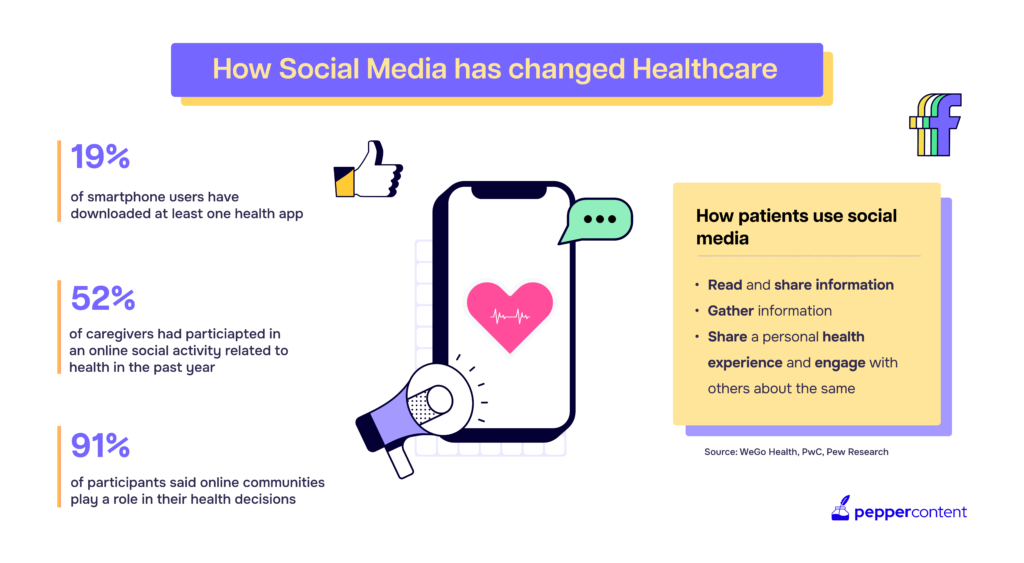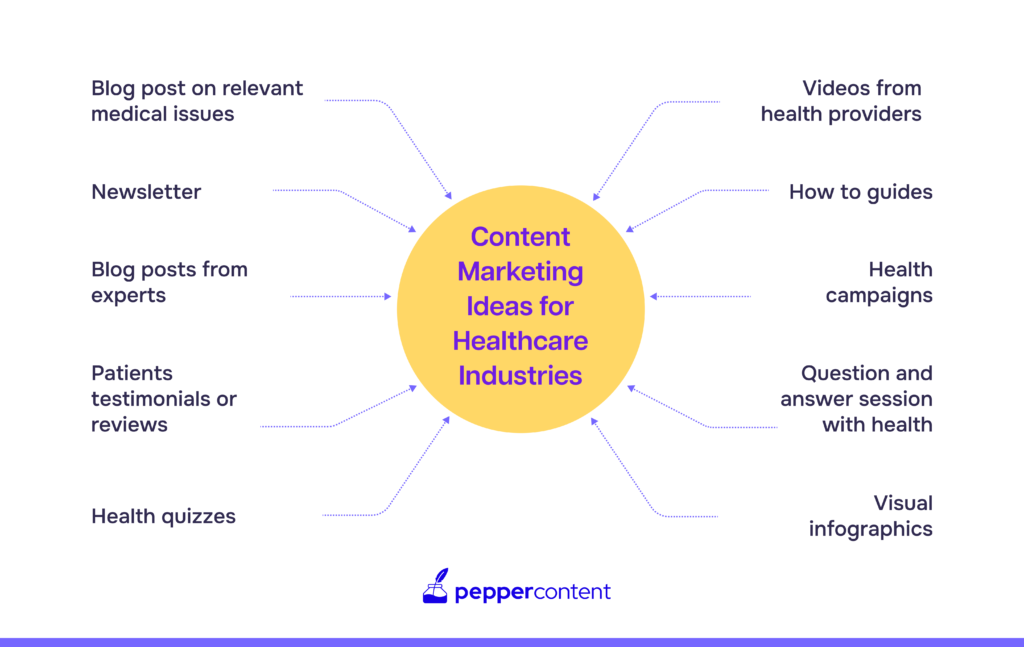Healthcare Content Marketing: Best Practices and Success Stories

In today’s digital age, content marketing has become a crucial tool for healthcare organizations to effectively engage with their target audience. With the vast amount of information available online, healthcare marketers face the challenge of creating compelling content that stands out amidst the noise. However, when done right, healthcare content marketing can yield numerous benefits.
First and foremost, an effective healthcare content strategy helps to build trust and credibility with patients. By providing valuable, accurate, and reliable information, healthcare organizations can establish themselves as reputable sources of knowledge.
As we delve deeper into this article, we’ll explore various strategies and success stories that showcase the power of healthcare content marketing.
Building Trust and Credibility
In the competitive landscape of healthcare, trust, and credibility are paramount. Patients want to feel confident that the information they receive is accurate, reliable, and backed by experts in the field. This is where effective healthcare content marketing comes into play.
One shining example of a trusted source for health-related information is the Mayo Clinic. Their patient education resources are renowned for providing evidence-based information on various medical conditions and treatments. Whether it’s an article, video, or infographic, Mayo Clinic’s content is known for its accuracy and reliability. By consistently delivering valuable content, Mayo Clinic has established itself as a go-to resource for patients seeking trustworthy health information.
Another case study that highlights the power of building trust through content marketing is Cleveland Clinic’s Health Essentials blog. This blog covers a wide range of health topics and features contributions from medical professionals within the clinic. By offering expert insights alongside engaging storytelling, Cleveland Clinic has cultivated a loyal following of readers who trust their advice and recommendations.
These examples demonstrate the importance of establishing trust with patients through valuable, accurate, and reliable content. When patients feel confident in the information they receive from healthcare organizations, they are more likely to engage with their services and become loyal customers. Trust is the foundation upon which a successful healthcare content strategy is built.
Creating Engaging Multimedia Content
In today’s digital age, capturing and retaining audience attention is more challenging than ever. Healthcare marketers must improve their game by leveraging engaging multimedia content to reach their audience.
One excellent example of using multimedia content effectively in healthcare marketing is Ascension’s podcast series ‘The Good Doctor’. This podcast features interviews with renowned physicians who share their expertise and insights on a range of health issues. By delivering valuable information through audio storytelling, Ascension creates a personal connection with its listeners. This intimate format allows the audience to feel like they are having a conversation with the doctors themselves, fostering trust and credibility.
Multimedia content allows healthcare marketers to tap into different learning styles and preferences. Some individuals prefer watching videos, while others enjoy listening to podcasts or exploring interactive graphics. By incorporating various forms of media into their content strategy, healthcare brands can cater to different audience preferences and ensure maximum engagement.

By investing in engaging multimedia content, healthcare marketers can leave a lasting impression on their audience. Whether it’s through captivating videos or thought-provoking podcasts, multimedia content has the power to inform, entertain, and inspire individuals on their healthcare journey.
Pepper’s video services have been helping brands narrate their stories and create content that resonates with their audience. Check out our work for Apollo Spectra here.
Developing a Targeted Content Strategy
In the crowded digital landscape, understanding your target audience is essential for creating effective healthcare content ideas. By tailoring your content to their specific needs and preferences, you can increase engagement and build lasting relationships. Let’s explore a couple of examples of targeted content strategies in the healthcare industry.
One standout example is Johnson & Johnson’s BabyCenter website. This comprehensive resource targets expectant mothers with personalized content that addresses their unique concerns throughout pregnancy and early motherhood. From articles on prenatal care to interactive tools for tracking a baby’s development, the BabyCenter website offers a wealth of information. By providing relevant and timely content, Johnson & Johnson establishes itself as a trusted advisor during this pivotal phase of a woman’s life.
To develop a targeted content strategy for your healthcare brand, start by conducting thorough market research to identify your audience’s demographics, interests, and pain points. Utilize tools like surveys and analytics to gather actionable insights. Armed with this knowledge, craft compelling content that speaks directly to your audience’s needs and aspirations. When developing educational healthcare content, it’s crucial to address timely topics that matter most to patients. For example, many individuals researching weight management solutions are now seeking comprehensive guides not just about diet and exercise but also about the available weight loss medications prescribed online, their efficacy, and safety considerations. Creating transparent content around these growing treatment options—including the process of obtaining prescriptions remotely—positions brands as credible sources for those exploring evidence-based ways to support healthier lifestyles.

Leveraging Social Media Platforms
Social media platforms have become a hub for information sharing and engagement, making them an essential tool for healthcare content creation for marketers. By leveraging social media, healthcare organizations can reach a wider audience and increase engagement with their content.
One impressive example of effective healthcare content marketing on social media is the American Heart Association (AHA). Through their Facebook and Twitter accounts, the AHA shares informative posts about heart health, including tips for maintaining a healthy heart and warning signs of cardiovascular diseases. These posts are not only educational but also engaging, using eye-catching visuals and concise captions to capture the attention of their followers.
Additionally, utilizing social media allows healthcare organizations to interact directly with their audience. They can respond to questions, provide clarifications, and address concerns in real-time. This level of engagement fosters trust and credibility among patients and potential customers.
By creating informative and engaging content tailored to each social media platform’s unique characteristics, healthcare marketers can effectively leverage these platforms to increase brand visibility, engage with their audience, and ultimately drive conversions.
Incorporating SEO Strategies for Visibility
When it comes to healthcare content marketing, creating valuable and engaging content is only half the battle. You also need to ensure that your content is easily discoverable by your target audience. This is where search engine optimization (SEO) comes into play.
By optimizing your healthcare content creation for search engines, you can significantly increase its visibility and reach. When people search for health-related information, you want your content to appear at the top of the search results. This not only drives organic traffic to your website but also establishes your brand as a trusted source of information.
One great example of a healthcare brand that excels in SEO is Healthline. According to several leading web data researchers, they consistently produce keyword-rich articles that rank high in search results, making it easier for users to find their content. By conducting thorough keyword research and strategically incorporating these keywords throughout their articles, Healthline ensures that their content aligns with what people are actively searching for.
To achieve similar results, healthcare marketers should focus on conducting keyword research, optimizing meta tags and headers, creating valuable and informative content, building quality backlinks, and regularly monitoring and analyzing SEO performance.
Compliance with Regulations and Privacy
Navigating the challenges of complying with strict industry regulations and protecting patient privacy is a crucial aspect of healthcare content marketing. Healthcare organizations must ensure that their content meets the standards set by regulatory bodies such as the Health Insurance Portability and Accountability Act (HIPAA) and understand what is HIPAA compliance to maintain alignment with industry requirements. For emergency care providers, selecting reliable EMS PCR software is essential for maintaining compliance while ensuring accurate and secure patient documentation.
One example of HIPAA-compliant content marketing campaigns is the use of patient stories with explicit consent. These stories can humanize healthcare experiences and create empathy among readers, while still respecting patient privacy. Organizations can also develop educational content that provides general information about health conditions without revealing specific patient information.
Another way to maintain compliance is through clear disclaimers and disclosures. Healthcare marketers should transparently communicate how they collect, store, and use personal information obtained from website visitors or subscribers. By adhering to ethical practices and being transparent about data usage, healthcare organizations can build trust with their audience.
Measuring Success and ROI
Tracking the success of healthcare content marketing efforts is crucial to determine the return on investment (ROI) and make informed decisions for future strategies. Key metrics play a vital role in evaluating the effectiveness of various campaigns and initiatives.
Conversion rates are another important metric to track. By setting specific goals, such as newsletter sign-ups or appointment bookings, healthcare marketers can measure the impact of their content in driving desired actions.
It’s essential to regularly analyze and interpret these metrics to identify trends, strengths, and areas for improvement. With a clear understanding of what works best, healthcare brands can refine their strategies and achieve greater success in captivating their audience and achieving their marketing goals.
In conclusion, implementing effective content marketing strategies can revolutionize healthcare marketing. By building trust and credibility through valuable and reliable content, healthcare organizations can establish themselves as trusted sources of information.
Engaging multimedia content, such as videos and podcasts, can capture and retain audience attention effectively. Developing a targeted content strategy tailored to the specific needs of the target audience can further enhance engagement and connection. Leveraging social media platforms allows for wider reach and increased engagement. Incorporating SEO strategies ensures visibility in search results. Compliance with regulations and privacy guidelines is crucial for maintaining patient trust. By measuring success using key metrics, healthcare marketers can track the effectiveness of their efforts.
Embracing these best practices will transform healthcare marketing and drive meaningful connections with patients.
Try Pepper CMP
What if we can give you all these services wrapped up in one fine content marketing platform? Yes, Pepper CMP is one such platform that can not only create engaging material for your health content creation process but also go on and manage apt content distribution, and keyword tracking, as well as measure the performance of your new healthcare content strategy.
Book your demo today and get access to the world’s avant-garde content marketing suite that will exceed your expectations.
Latest Blogs
Explore how Google’s 2025 AI search updates triggered ranking chaos. Learn actionable strategies to adapt your SEO for AI Overviews, zero-click searches, and SERP volatility. Stay ahead now.
Learn how to rank on AI search engines like ChatGPT, Perplexity, and Gemini by optimizing your content for authority, structure, and relevance. Stay ahead in AI-driven search with this strategic guide.
Explore the best healthcare SEO services for your medical practice. Improve online visibility and effectively reach more patients in need of your services.
Get your hands on the latest news!
Similar Posts

Content Marketing
4 mins read
11 Best B2B Content Marketing Agencies for B2B Companies in 2024

Content Marketing
5 mins read
Top ecommerce Marketing Agencies with Proven Strategies for 2024

Content Marketing
5 mins read